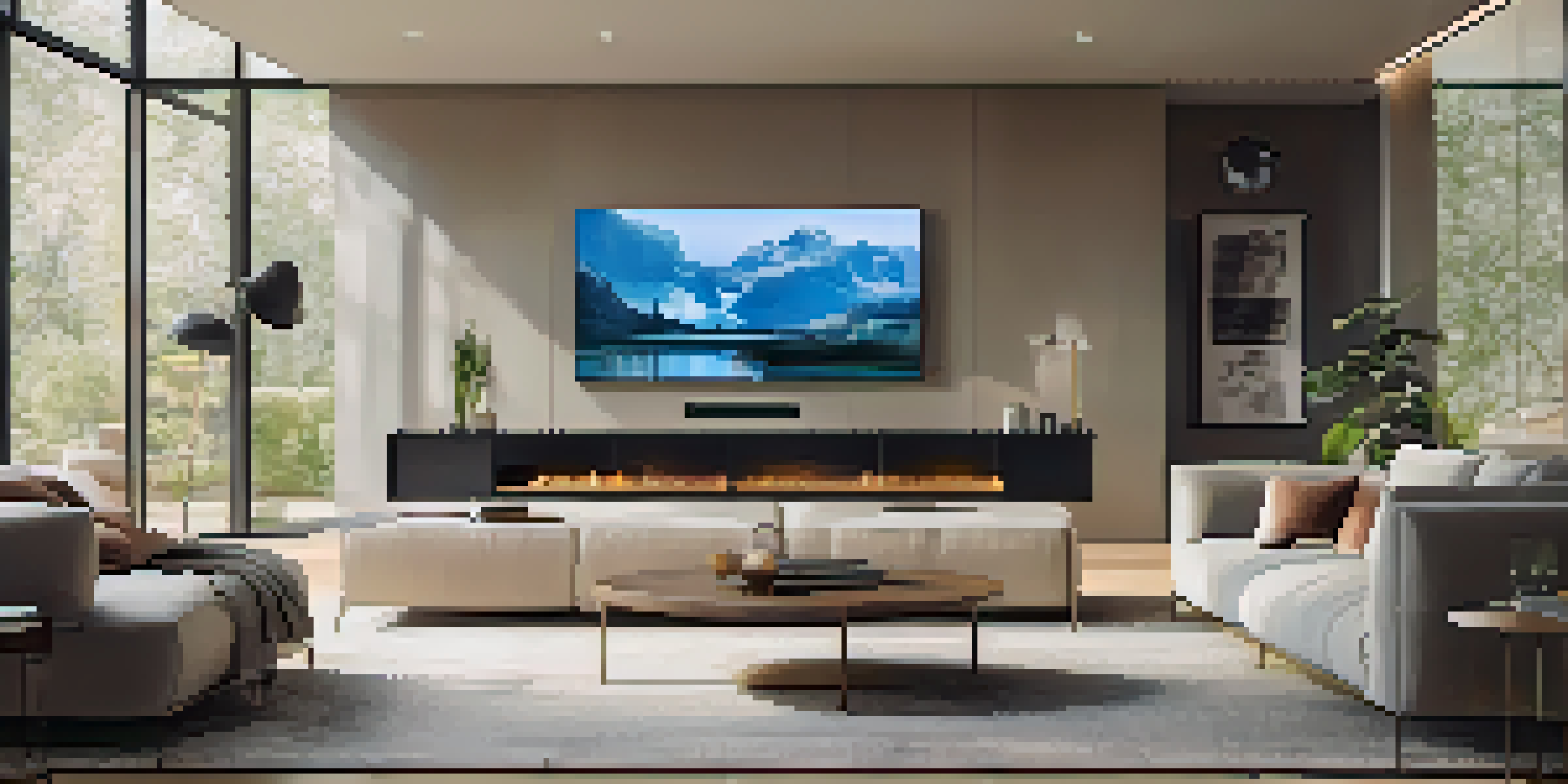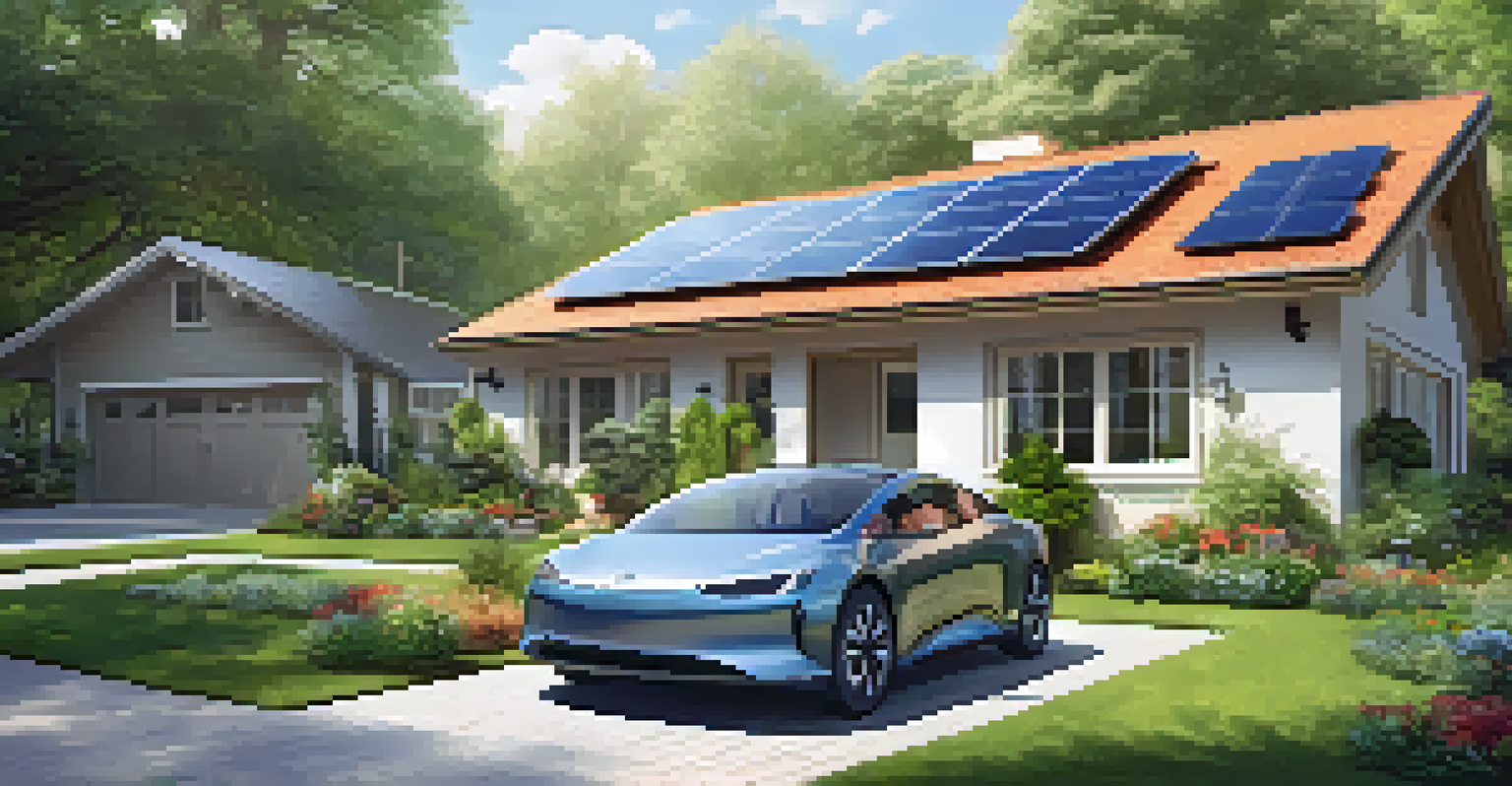Home Automation: What to Expect in the Next Decade

The Rise of AI in Home Automation Systems
Artificial intelligence (AI) is set to revolutionize home automation over the next decade. Imagine a home that learns your habits, adjusting temperature, lighting, and even music based on your preferences. This level of personalization will not only enhance comfort but also conserve energy by optimizing usage patterns throughout the day.
The future is already here — it's just not very evenly distributed.
As AI becomes more integrated into smart devices, we can expect systems to communicate with each other seamlessly. For example, your refrigerator might suggest recipes based on its contents while your oven preheats automatically. This interconnectedness will create a more intuitive living environment, reducing the need for manual adjustments.
However, with great power comes great responsibility. The challenge will lie in ensuring security and privacy as these systems become more advanced. Homeowners will need to be vigilant about protecting their personal data from potential breaches while enjoying the convenience of AI-driven automation.
Seamless Integration of Smart Devices
In the coming years, we'll see a push towards greater compatibility among smart devices. Currently, many homeowners struggle with gadgets that don’t play well together. But as industry standards evolve, expect to have a cohesive smart home ecosystem where everything from your thermostat to your security cameras can be managed from a single app.

This seamless integration will not only enhance convenience but also streamline the user experience. Picture this: you could set your lights to dim automatically when your smart TV is turned on or schedule your coffee maker to start brewing as you wake up. The possibilities for daily routines are endless.
AI Personalizes Home Automation
Artificial intelligence will transform homes by learning preferences and optimizing energy use for enhanced comfort.
Moreover, with voice assistants becoming more sophisticated, controlling your smart home will be as simple as speaking commands. Imagine walking in after a long day and saying, 'I'm home,' to have the lights adjust, the thermostat set, and your favorite music start playing. It’s the kind of comfort that makes returning home feel like a warm embrace.
Focus on Energy Efficiency and Sustainability
Sustainability will be a key driver in the evolution of home automation. As more people become environmentally conscious, smart home technologies will focus on energy efficiency. For instance, smart thermostats are already helping homeowners reduce energy consumption by learning their schedules and adjusting temperatures accordingly.
Technology is best when it brings people together.
In the next decade, we can expect to see advancements in renewable energy integration within home automation systems. Imagine a home that not only manages electricity usage but also generates its own energy through solar panels, storing excess power in batteries for later use. This level of self-sufficiency could drastically reduce utility bills and carbon footprints.
Additionally, smart water management systems will emerge to help homeowners conserve water. Devices can monitor water usage and detect leaks, alerting you before a small drip becomes a major issue. This proactive approach not only saves resources but also promotes a more sustainable lifestyle.
Enhanced Security Features in Smart Homes
As home automation systems evolve, so too will the security features that protect them. With the rise of smart cameras, locks, and alarms, homeowners can expect enhanced surveillance capabilities that can be monitored remotely via smartphones. This provides peace of mind whether you're at home or away.
In the next decade, we will likely see the integration of biometric technology, such as facial recognition or fingerprint scanning, into security systems. This adds an extra layer of protection, ensuring that only authorized individuals can access your home. It’s like having a personal bodyguard, but in tech form.
Seamless Smart Device Integration
The future will bring better compatibility among smart devices, allowing for effortless control and automation of daily routines.
Moreover, advancements in AI will allow security systems to learn and adapt to unusual behaviors. For instance, if your home’s motion sensors detect movement at unusual hours, the system could alert you or even contact emergency services. This proactive approach to security will make homes safer than ever.
The Role of Virtual and Augmented Reality
Virtual reality (VR) and augmented reality (AR) are set to play surprising roles in home automation. In the coming years, these technologies will enable homeowners to visualize changes in their living spaces before making any physical alterations. For instance, you could use AR to experiment with different furniture placements or wall colors simply by pointing your smartphone at the room.
Additionally, VR could enhance remote home monitoring experiences. Imagine virtually stepping into your home to check on things while you're away. This immersive experience could be particularly valuable for monitoring pets or ensuring that everything is secure.
As these technologies develop, they will not only make home design more interactive but also empower homeowners to make informed decisions about their spaces. The integration of VR and AR in home automation marks a new era of creativity and personalization.
Improved User Interfaces and Control Mechanisms
The user interface of smart home devices will become increasingly intuitive over the next decade. Currently, many users face a steep learning curve when navigating various apps and controls. However, future designs will prioritize user experience, employing more natural gestures and voice commands for control.
With advancements in touchless technology, you could control devices with simple hand gestures. Imagine walking into a room and waving your hand to turn on the lights or adjust the thermostat without touching anything. Such innovations will make smart homes more accessible and user-friendly, regardless of technical expertise.
5G Enhances Smart Home Efficiency
The rollout of 5G technology will enable faster communication between devices, improving the functionality and responsiveness of home automation systems.
Moreover, as smart devices become more integrated, the need for multiple remote controls will fade. Instead, you will have the ability to manage everything through a centralized system, whether it’s through voice commands, a smartphone app, or even a smartwatch. This simplification will enhance the overall experience of living in a smart home.
Impact of 5G Technology on Home Automation
The rollout of 5G technology will significantly impact home automation, providing faster and more reliable connections for smart devices. This leap in technology means that devices can communicate with each other nearly instantaneously, enhancing the overall efficiency of a smart home system.
With 5G, we can expect an increase in the number of connected devices per household. This means your smart fridge, thermostat, lights, and even your lawn mower can all function simultaneously without lag. Imagine streaming a 4K movie while your home management system runs diagnostics on other devices—all without a hitch.

Additionally, 5G will enable more advanced features in home automation, such as high-definition video surveillance and real-time remote monitoring. This will not only improve security but also enhance the user experience by allowing homeowners to interact with their devices in real-time no matter where they are.